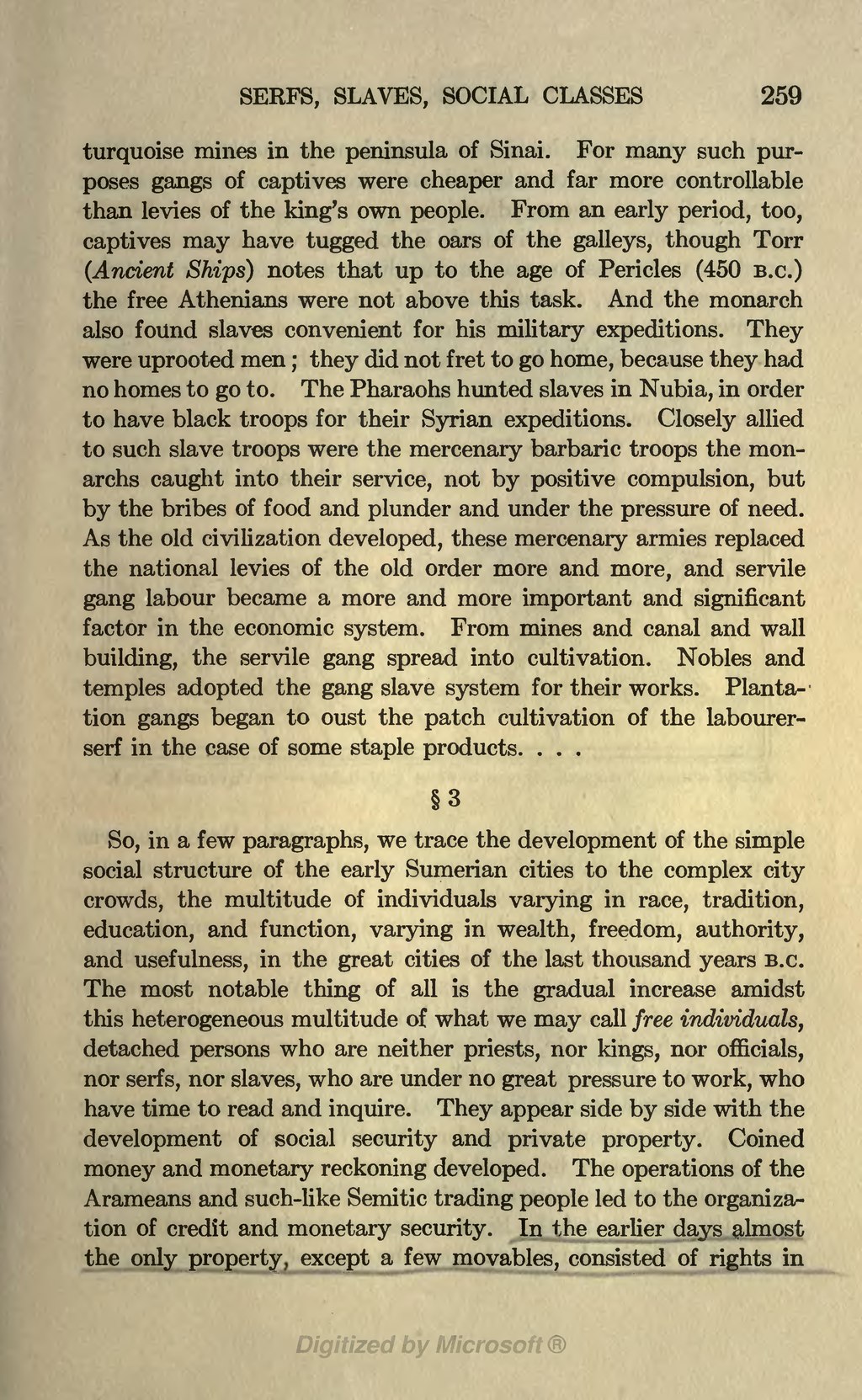turquoise mines in the peninsula of Sinai. For many such purposes gangs of captives were cheaper and far more controllable than levies of the king's own people. From an early period, too, captives may have tugged the oars of the galleys, though Torr (Ancient Ships) notes that up to the age of Pericles (450 b.c.) the free Athenians were not above this task. And the monarch also found slaves convenient for his military expeditions. They were uprooted men; they did not fret to go home, because they had no homes to go to. The Pharaohs hunted slaves in Nubia, in order to have black troops for their Syrian expeditions. Closely allied to such slave troops were the mercenary barbaric troops the monarchs caught into their service, not by positive compulsion, but by the bribes of food and plunder and under the pressure of need. As the old civilization developed, these mercenary armies replaced the national levies of the old order more and more, and servile gang labour became a more and more important and significant factor in the economic system. From mines and canal and wall building, the servile gang spread into cultivation. Nobles and temples adopted the gang slave system for their works. Plantation gangs began to oust the patch cultivation of the labourer-serf in the case of some staple products....
§ 3
So, in a few paragraphs, we trace the development of the simple social structure of the early Sumerian cities to the complex city crowds, the multitude of individuals varying in race, tradition, education, and function, varying in wealth, freedom, authority, and usefulness, in the great cities of the last thousand years b.c. The most notable thing of all is the gradual increase amidst this heterogeneous multitude of what we may call free individuals, detached persons who are neither priests, nor kings, nor officials, nor serfs, nor slaves, who are under no great pressure to work, who have time to read and inquire. They appear side by side with the development of social security and private property. Coined money and monetary reckoning developed. The operations of the Arameans and such-like Semitic trading people led to the organization of credit and monetary security. In the earlier days almost the only property, except a few movables, consisted of rights in
